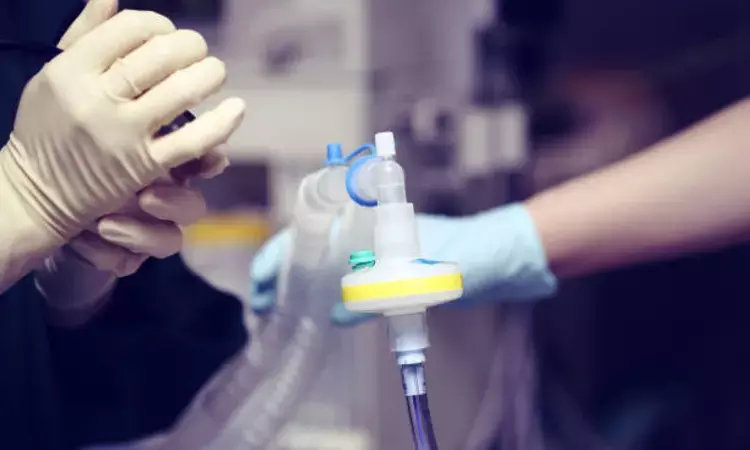- Home
- Medical news & Guidelines
- Anesthesiology
- Cardiology and CTVS
- Critical Care
- Dentistry
- Dermatology
- Diabetes and Endocrinology
- ENT
- Gastroenterology
- Medicine
- Nephrology
- Neurology
- Obstretics-Gynaecology
- Oncology
- Ophthalmology
- Orthopaedics
- Pediatrics-Neonatology
- Psychiatry
- Pulmonology
- Radiology
- Surgery
- Urology
- Laboratory Medicine
- Diet
- Nursing
- Paramedical
- Physiotherapy
- Health news
- Fact Check
- Bone Health Fact Check
- Brain Health Fact Check
- Cancer Related Fact Check
- Child Care Fact Check
- Dental and oral health fact check
- Diabetes and metabolic health fact check
- Diet and Nutrition Fact Check
- Eye and ENT Care Fact Check
- Fitness fact check
- Gut health fact check
- Heart health fact check
- Kidney health fact check
- Medical education fact check
- Men's health fact check
- Respiratory fact check
- Skin and hair care fact check
- Vaccine and Immunization fact check
- Women's health fact check
- AYUSH
- State News
- Andaman and Nicobar Islands
- Andhra Pradesh
- Arunachal Pradesh
- Assam
- Bihar
- Chandigarh
- Chattisgarh
- Dadra and Nagar Haveli
- Daman and Diu
- Delhi
- Goa
- Gujarat
- Haryana
- Himachal Pradesh
- Jammu & Kashmir
- Jharkhand
- Karnataka
- Kerala
- Ladakh
- Lakshadweep
- Madhya Pradesh
- Maharashtra
- Manipur
- Meghalaya
- Mizoram
- Nagaland
- Odisha
- Puducherry
- Punjab
- Rajasthan
- Sikkim
- Tamil Nadu
- Telangana
- Tripura
- Uttar Pradesh
- Uttrakhand
- West Bengal
- Medical Education
- Industry
How Effective is Single Lung Ventilation with Double endotracheal tubes?

Recently published research paper discusses the effectiveness of single lung ventilation (SLV) using a double lumen tube (DLT) for providing surgical exposure in the thoracic cavity. It emphasizes the protective benefits of SLV for a healthy lung, highlighting the types of unhealthy lung fluids it protects from, such as blood, lavage fluid, malignant, or purulent secretions. Correct placement is emphasized and confirmed by endotracheal tubes (FOB).
The paper presents an alternative technique to the DLT in SLV without the use of a FOB, which involves inserting two endotracheal tubes (ETT) in the trachea. The study found that this technique can be effective in achieving lung separation and selective lung ventilation. The benefits of this technique include its flexibility, ease of use, and potential availability in low-resource settings where DLT and FOB may not be readily available.
Challenging Cases and Successful Utilization of New Technique -
The paper provides detailed descriptions of two challenging cases where this new technique was utilized, demonstrating successful lung isolation with no adverse consequences and maintaining oxygen saturation above 90%. The authors also mention the potential advantages of this technique in facilitating surgical procedures and managing difficult cases, such as patients with severe airway obstruction or frailty.
Potential Concerns with the New Technique -
However, the paper acknowledges potential concerns with the new technique, such as an increased risk of bleeding and airway trauma, as well as potential challenges in patients with anticipated difficult airways. The authors suggest that further clinical studies with larger sample sizes are needed to determine the value and potential applications of this technique, including in the ICU setting.
Paper's Overall Insights and Conclusion -
Overall, the paper provides valuable insights into an alternative approach for selective lung ventilation without the use of a fiberoptic bronchoscope, highlighting its potential benefits and areas for further investigation.
Key Points -
- The paper discusses the effectiveness of single lung ventilation (SLV) using a double lumen tube (DLT) for providing surgical exposure in the thoracic cavity, emphasizing the protective benefits of SLV for a healthy lung and correct DLT placement confirmed by a fiberoptic bronchoscope.
- An alternative technique to DLT in SLV without a fiberoptic bronchoscope is presented, involving the insertion of two endotracheal tubes (ETT) in the trachea, with the study finding this technique effective in achieving lung separation and selective lung ventilation. The technique's benefits include flexibility, ease of use, and potential availability in low-resource settings.
- The paper provides detailed descriptions of challenging cases where the new technique was utilized successfully, mentions potential concerns such as increased risk of bleeding and airway trauma, and suggests the need for further clinical studies with larger sample sizes to determine the value and potential applications of the technique.
Reference –
Alsamman H, Bui A, Howard J, et al. (April 25, 2023) An Alternative Approach for Selective Lung Ventilation. Cureus 15(4): e38126. DOI 10.7759/cureus.38126
MBBS, MD (Anaesthesiology), FNB (Cardiac Anaesthesiology)
Dr Monish Raut is a practicing Cardiac Anesthesiologist. He completed his MBBS at Government Medical College, Nagpur, and pursued his MD in Anesthesiology at BJ Medical College, Pune. Further specializing in Cardiac Anesthesiology, Dr Raut earned his FNB in Cardiac Anesthesiology from Sir Ganga Ram Hospital, Delhi.
Dr Kamal Kant Kohli-MBBS, DTCD- a chest specialist with more than 30 years of practice and a flair for writing clinical articles, Dr Kamal Kant Kohli joined Medical Dialogues as a Chief Editor of Medical News. Besides writing articles, as an editor, he proofreads and verifies all the medical content published on Medical Dialogues including those coming from journals, studies,medical conferences,guidelines etc. Email: drkohli@medicaldialogues.in. Contact no. 011-43720751


